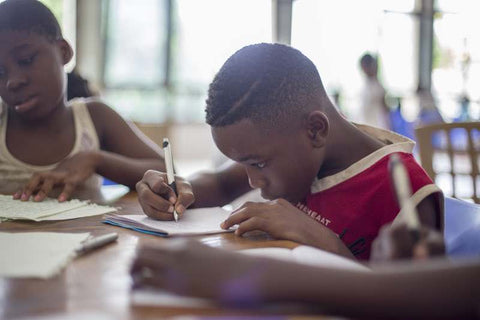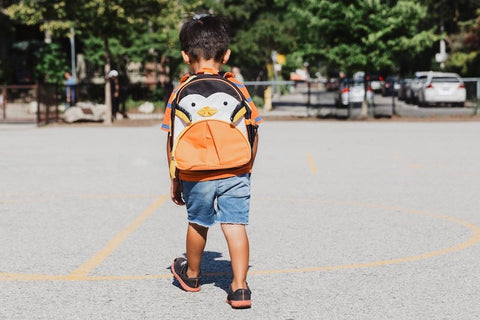"Education is the most powerful weapon which you can use to change the world.” Nelson Mandela
These words ring so true. With so much going on in the world today, we need to remember that education is key to make these important changes in the world. From learning how to protect the earth to inculcating a deep love for what our ancestors fought for, and what we all continue to keep fighting for. Equality.
A good education is imperative! This should be a basic human right for all children, no matter where you come from, but sadly this is not the case.
Education can help children enrich their lives, which in turn enriches communities, and this in turn can change the world. But how can this happen when there is so much discrimination, poverty, and a lack of affordable and excellent schooling for children? This is not only a problem in America, but also in the world.
World Statistics on youth education
As mentioned above so many children are unable to go to school because their families might not be able to afford good schools, or in some very sad cases, some children end up taking care of their own families because they might have been left orphaned. This is the harsh reality in South Africa, for example. Many older siblings miss out on a good education because they might be taking care of their younger siblings.
Did you know that :
- 57 million children are not attending school worldwide, and the majority of these children are girls.
- Children from the poorest income families are 3 times more likely to not attend school.
- Children who come from low-income families are also 7 times more likely to drop out of school than higher-income families. One reason for this could be that children start working to support their families.
- This year alone due to the Covid19 pandemic 1 billion children are out of school, most of these children don’t have the resources for online learning due to poverty.
- Worldwide 175 million children are not enrolled in pre-primary education. This affects how many children can read fluently by the age of 10. According to statistics, 53% of children in low-income families struggle to read.
If you think about how far the world has come with technology, medicine, and so on, we still have an incredibly far way to go when it comes to educating the children of the world. The worst part is that this should be a basic human right for all of our children, but it’s not.
This is how the world is fairing on youth education, how about America? America is a first-world country, after all, so is America fairing better when it comes to youth education?
Let’s have a look at the stats.
Statistics on youth education in America
Every child deserves the opportunity to learn and grow. This is why youth development is of utmost importance. Sadly across America 30 million children are living in poverty. As we read above, this often means that these children will not receive the education which they need and deserve. It’s heartbreaking to note that in low-income households there was only 1 book for every 300 children.
- Children who live in poverty in America have a higher number of absenteeism.
- These children are also more likely to drop out of school because they need to care for family members. Either by working themselves, or looking after younger siblings while their parents work.
- 40% of children who live in poverty aren’t prepared for primary school.
- 12% of children who drop out of high school are unemployed at the moment. And these children are also 8 times more likely to commit crimes
- The top 5 states in America where children are left homeless are, Washington DC, Nevada, California, Oregon, and Washington.
- Children who live below the poverty line are more likely to have developmental delays and learning disabilities.
- In 2013, 8% of African American children dropped out of school, 7% of Hispanic youth, and 4% Asian children.
- On average the national spending amount per student is $13,301, and in a few other states, the amount of money spent per child is even less. If the correct amount of funding can’t be found, then the achievement gap stays open. Children are also less likely to graduate. Lower funding also means fewer teachers, fewer programs, and diminished resources.
- Sadly many children who come from low-income households are also hungry. How can children learn when they haven’t eaten? In many schools, free food is provided, or food at a lower cost.
America has come a long way with education in many respects, but there is still so much that needs to be done for the youth of our country. Especially for children who are at risk, and who live in poverty. This leads to the questions, what can we do to help our children?
What can we do to help at-risk youths with education?
- Listen
Take the time to listen to children who might be suffering from hardships. If you are a teacher there is so much that you can do to encourage the kids in your class. - Be there
If you are a parent, be there for your child. Listen to them, and take the time to help them with schoolwork if you can. It can be extremely hard, especially if both parents are working full time to make ends meet. But remember, your kids need your love, encouragement, and belief in them. - Provide practical support
If you have the means, help contribute towards those who are at risk. There are many charities that you can support. You could even see which schools need funding. Another option is to provide a bus pass, meals, clean clothes, or even offer to babysit. These are practical ways in which you can help families whose kids need to stay in school - Connect
Help the children in your community connect with others who might have a positive effect on them. You could perhaps help them find a counselor or social service providers.
Things to think about
Think about the youth in your community? Especially now with the pandemic many children might be struggling emotionally. Many families have lost their jobs or even loved ones. What can you do to help? Could you perhaps donate to a strong cause? Or help a family in your neighborhood with meals? When we all stand together we can help the children of this country. We can help them attend school, provide enough contributions to help with funding, provide clothes, food, and even a watchful eye, to make sure that the kids are okay.
This is why Everyday People Coffee & Tea strives to help our youth. We donate funds to children who are at risk. We want the children of this country to succeed.
Whatever we can do today, will allow these children to have a brighter future. And when our kids have a brighter future, it means that America can have a brighter future too.



